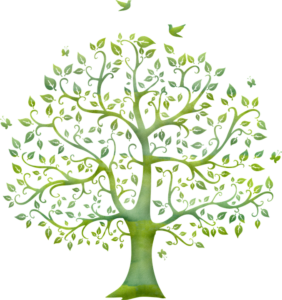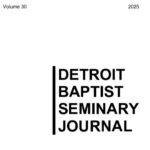The Two Trees, Part 1: The Tree of the Knowledge of Good and Evil
Among the many trees in the Garden of Eden, Scripture tells us, stood two trees of great significance: the tree of the knowledge of good and evil and the tree of life. This pair of posts is an attempt to understand the nature, effects, and relationship of these two trees. Specifically, we will explore whether these trees were arbitrarily appointed but ordinary trees, or whether these trees had intrinsic, supernatural properties that could alternately destroy/sustain life.
That the first tree is called the tree of the knowledge of good and evil suggests that eating its fruit would change the relationship of Adam and Eve with respect to good and evil. The change of relationship is not easy to define. They already knew about the good by having experienced it in their “very good” world, and could have added to their experimental knowledge of the good only by avoiding the tree. Their knowledge of evil, however (which was previously theoretical only), became experimental upon eating. But this renders the tree one only of the knowledge of evil, and not a tree of the knowledge of good. Since the tree’s label encompasses both evil and good, there is probably something more here to discover. Some propose, based on the serpent’s intimation in Genesis 3:5 that by eating, the primitive couple would become “like God” (which God corroborates in v. 21), that Adam intended, by eating, to breach the Creator/creature distinction and assume the role of arbiter of good and evil: he would assume autonomy with respect to ethics and so be able to self-determine what was good and evil. This proposal is plausible and I cautiously accept it.
What the serpent suppresses is God’s warning that eating of the fruit of this tree would result in certain death. Here also we have potential for confusion. It is safe to say that Adam and Eve died spiritually at that moment of eating, resulting in the kindling of divine wrath and an eruption of mutual hostility between God and man. One wonders, though, whether Adam and Eve had spiritual death in mind when they were initially warned about eating. It seems likelier that they would have anticipated physical death, which did not occur—at least not “at that moment,” as God had said. One workaround is that the seeds of mortality were sown immediately so that Adam and Eve began their long, slow decline toward inevitable death, but this does not seem to match the urgency of God’s warning. A possible solution is that the phrases “in that day” and “dying you will die” together are to be understood idiomatically as stressing not so much immediacy of death as certainty of death: “Just as surely as you have eaten, you will surely die.” Among the options, the last option seems the most satisfying.
But what is it that gave this tree of the knowledge of good and evil its power to accomplish these effects? We might be tempted to suggest that the tree’s intrinsic qualities are the culprit—after all, the serpent points out the intrinsic beauty and nutritious value of the fruit in the same breath that he observes its ethical effects. Perhaps the tree was as poisonous, intrinsically, as it was good and beautiful. Two observations make this unlikely: (1) the serpent is not generally a trustworthy source for theology, and (2) the tree was of a “very good” quality, along with the rest of the creation. It is likely, instead, that the sinister knowledge of good and evil (and its result in death) accrued not from the fruit proper, but from the act of eating it. The tree, as such, was an ordinary tree appointed by God to serve as a test for Adam and Eve. Once the test was complete, its unique function ceased.



